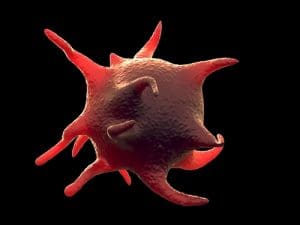 Platelets are kind of like a group of construction workers. When a tear or cut in tissue occurs, the platelets work to create a scaffold, bringing those tissues back together and creating collagen and scar tissue to heal the torn and damaged tissue.
Platelets are kind of like a group of construction workers. When a tear or cut in tissue occurs, the platelets work to create a scaffold, bringing those tissues back together and creating collagen and scar tissue to heal the torn and damaged tissue.
Platelet-rich Plasma (platelet injections) therapy is a relatively new way to treat a variety of musculoskeletal injuries. The process involves taking your body’s own natural healing cells, the platelets, out of the body via a blood sample, concentrating them by centrifugation, and then injecting them back into the body at the injury site to induce a naturally occurring healing response.
Platelets are kind of like a group of construction workers. When a tear or cut in tissue occurs, the platelets work to create a scaffold, bringing those tissues back together and creating collagen and scar tissue to heal the torn and damaged tissue. Additionally, they release a variety of growth factors and anti-inflammatory cytokines to help induce this healing response and fix the painful problem. Unlike traditional anti-inflammatory medications, which merely mask the symptoms, platelet injections offers the opportunity for real healing to occur and problems to be fixed.
Tendon, ligament and joint injuries are the most common conditions that are being successfully treated with platelet injections, particularly tennis elbow, plantar fasciitis, knee osteoarthritis and rotator cuff tears. Additionally, there is evidence to support platelet injections’s use in back pain caused by a torn disc.
Is platelet injections Effective?
 Research regarding platelet injections’s effectiveness shows a wide variety of findings. However, the latest studies on a newer form of platelet injections known as leukocyte-poor platelet injections show that platelet injections seems to be more effective than traditional cortisone shots in reducing pain and improving function.
Research regarding platelet injections’s effectiveness shows a wide variety of findings. However, the latest studies on a newer form of platelet injections known as leukocyte-poor platelet injections show that platelet injections seems to be more effective than traditional cortisone shots in reducing pain and improving function.
I use leukocyte-poor platelet injections in my practice because the studies show better evidence of its effectiveness. Leukocytes are known to have metalloproteinases in them, which are thought to degrade tissue and cause damage.
The results my patients have had with platelet injections have been promising. Most of my patients that have had a platelet injections injection have had some improvement in their pain and function if not complete resolution.
Administering platelet injections Therapy
At the Center for Spine and Orthopedics, we administer platelet injections very precisely using image guidance with an ultrasound or, in the case of disc pain, with fluoroscopy to ensure that the platelet injections gets to the exact site of injury.
Typically, only one platelet injections injection is necessary to be effective. Occasionally, booster shots are required, often depending on whether you re-injure your tissue. It is kind of like fixing a flat tire on your bike. You may be able to fix it and ride another 5,000 miles or you might run over another nail and need another repair.
Generally, it can take up to six or eight weeks to know how effective a single platelet injections injection has been. The length of time varies depending how quickly an individual heals.
I recommend platelet injections as an option when discussing nearly any musculoskeletal pain complaint with patients, particularly when traditional treatment options have failed or are otherwise not indicated.
—Matthew McAuliffe, MD
Note: To learn more about platelet injections, attend Dr. McAuliffe’s lecture on non-surgical treatment for osteoarthritis from 1-2 p.m. on Tuesday, May 2, at the Thornton Senior Center. To reserve a seat, email johnsonk@centerforspineandortho.com or call 303-287-2800, ext. 225








